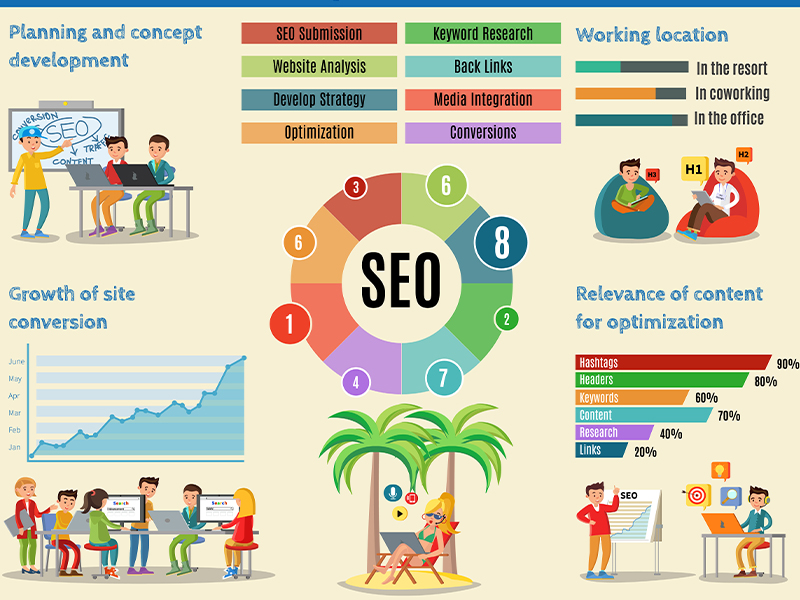SEO Audit Complete Checklist for 2025
In the dynamic world of digital marketing, search engine optimization (SEO) remains a cornerstone of online visibility and traffic generation. But simply optimizing your site once isn’t enough. Regular SEO audits are essential to maintain search rankings, identify issues, and stay ahead of algorithm updates. As we move into 2025, the SEO landscape continues to evolve with increased focus on user experience, AI integration, and technical performance.
Here’s a complete SEO audit checklist for 2025 to help you evaluate and enhance your website’s performance.
1. Website Crawling and Indexing
Start with a complete crawl of your website using tools like Screaming Frog, Ahrefs, or SEMrush. These tools help identify major issues like broken links, duplicate content, missing meta tags, and crawl errors.
Key checks:
• Ensure no orphan pages (pages not linked from anywhere)
• Fix 404 errors and redirect chains
• Check robots.txt file to ensure important pages are crawlable
• Use Google Search Console to check indexing status and submit your sitemap
2. Mobile-First Optimization
Google’s indexing is mobile-first, meaning it primarily uses the mobile version of your site for ranking. Your website must be responsive and user-friendly on all devices.
Checklist:
• Responsive design across smartphones and tablets
• Fast mobile page load times
• Accessible navigation and clickable elements
• Use Google’s Mobile-Friendly Test to identify and fix issues
3. Core Web Vitals and Site Speed
Page experience signals like Core Web Vitals are now a confirmed ranking factor. These include metrics like Largest Contentful Paint (LCP), First Input Delay (FID), and Cumulative Layout Shift (CLS).
What to do:
• Use Google PageSpeed Insights and Lighthouse
• Optimize image sizes and formats (use Webp)
• Enable lazy loading, browser caching, and minification of code
• Consider using a Content Delivery Network (CDN)
4. On-Page SEO Elements
Ensure every page has optimized metadata and content that aligns with search intent.
Key elements to review:
• Title tags: Unique, keyword-rich, and under 60 characters
• Meta descriptions: Clear, enticing, and under 160 characters
• Header tags (H1, H2, H3...): Proper hierarchy and keyword placement
• URL structure: Short, clean, and keyword-inclusive
• Use of internal linking: to pass authority and guide users
5. Content Quality and Relevance
Search engines prioritize valuable, relevant, and updated content. Audit your content to ensure it provides real value and meets E-E-A-T (Experience, Expertise, Authoritativeness, and Trustworthiness) standards.
What to assess:
• Content should answer search queries clearly
• Avoid thin, duplicated, or outdated content
• Update top-performing pages for freshness
• Use structured data (schema markup) for rich snippets
6. Technical SEO Health
Behind-the-scenes optimizations can drastically affect your SEO performance.
Critical areas:
• Proper use of canonical tags to avoid duplicate content
• Fix broken internal and external links
• Ensure your XML sitemap is up-to-date and submitted to search engines
• HTTPS implementation across all pages
• Reduce server response time and improve site architecture
7. Backlink Profile Analysis
Backlinks remain a strong ranking factor. A healthy backlink profile can significantly boost domain authority and organic traffic.
To check:
• Audit backlinks using tools like Ahrefs or Moz
• Identify and disavow toxic or spammy links
• Acquire links from high-authority and relevant domains
• Ensure link anchor texts are diverse and natural
8. Local SEO Audit (if applicable)
For businesses with a local presence, local SEO is crucial for visibility in map packs and local searches.
Local SEO checklist:
• Claim and optimize your Google Business Profile
• Add accurate NAP (Name, Address, Phone) info across directories
• Collect and manage customer reviews
• Use local schema markup and create location-specific pages
9. User Experience (UX) Signals
User behaviour is increasingly influencing SEO rankings. Ensure a seamless, satisfying user journey on your website.
UX factors to evaluate:
• Clear CTAs (calls-to-action)
• Easy-to-read typography and color contrast
• Fast load times and intuitive navigation
• Low bounce rate and high time-on-site
10. AI and Voice Search Optimization
With AI and voice assistants becoming mainstream, it's important to optimize for voice-based queries and AI search responses.
Voice SEO tips:
• Target long-tail keywords and natural language phrases
• Structure content in FAQ format
• Optimize for featured snippets
• Make content conversational and concise
11. Competitor Benchmarking
Understanding what’s working for your competitors can offer insights and opportunities.
How to benchmark:
• Analyze their top-performing keywords and pages
• Study their backlink sources and content strategies
• Use tools like SEMrush, SpyFu, or Ubersuggest
12. Analytics and Reporting Setup
Make sure your tracking tools are configured correctly to measure SEO performance effectively.
Must-haves:
• Google Analytics 4 (GA4) properly installed
• Google Search Console integration
• Set up conversion tracking and goal funnels
• Monitor traffic sources, bounce rates, and keyword rankings regularly
Conclusion
SEO in 2025 is not just about keywords and backlinks—it's about delivering the best possible experience to users while staying technically sound and strategically visible. Performing regular SEO audits using this comprehensive checklist will help you keep your website aligned with the latest best practices, improve your rankings, and ultimately, grow your online presence. Stay proactive, embrace change, and let your SEO efforts lead the way to digital success.


